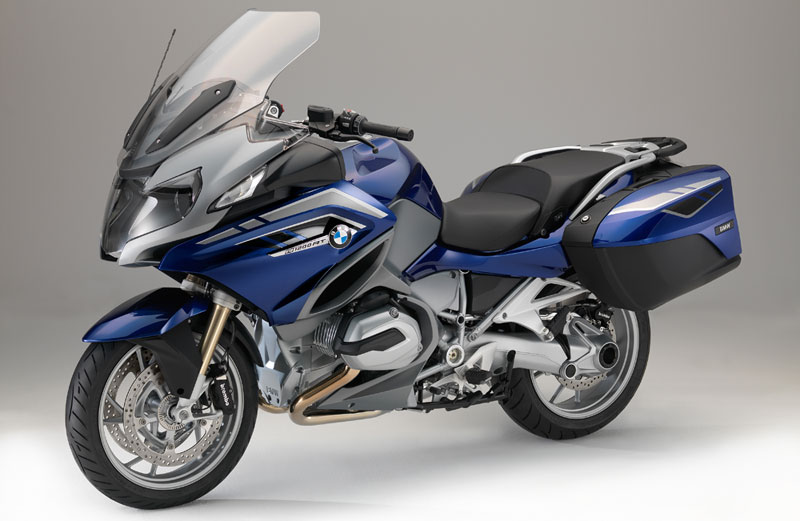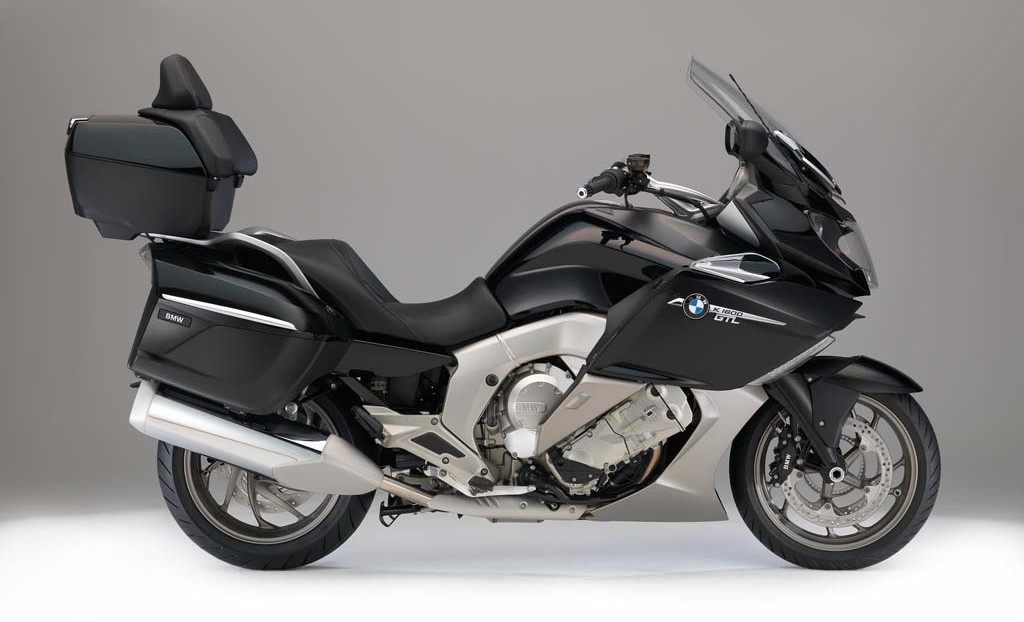Just one man’s set of observations after comparing these two fine pieces of Teutonic engineering.

The BMW K1600 and R1200RT are like non-identical twins. They do a lot of the same things equally well but they excel for different reasons. Generally speaking, if you’re coming from a sport Bike or a legitimate sport-touring platform, you’re probably going to like the R1200RT better. It’s lighter, has a shorter wheelbase, and plenty of grunt (125hp) to get you down the road. If, however, you’re coming from a different touring bike you will likely prefer the refinement of the K1600 and won’t care that it’s longer and heavier. Besides, a lot of the “heavy bike” complaints thrown at the K1600 can be forgiven as soon as you get out of the parking lot and you start to properly test that luscious inline six engine.

Simply put, the inline six on the K1600 is a seriously good thing. It’s narrower than you’d expect and is tilted forward to keep the weight as low in the frame as possible for better handling. As a result, you’re getting four additional cylinders over the R1200RT generating a total of 35 more horsepower, 37 more ft-lbs of torque, and you’re hitting maximum torque 1250RPMs earlier. (If you check the K1600’s torque curve, you’re at 70% of max torque at 1500 RPM!) Both are very capable engines, but the K1600 engine makes more power at lower RPMs in spite of the fact that the static compression ratio is lower than in the R1200RT. For a rider that tends to pile on the miles (e.g., me), these figures indicate that the K1600 engine, while more complex and slightly heavier than the R1200RT power plant, is engineered to be a fairly under-stressed unit. That translates into reliability (and a hell of a lot of fun). The four-cylinder difference also means that the R1200RT needs to rev higher to do its job, and that means higher RPMs at cruising speeds and more downshifts when you need to pass. I’ve rolled on the throttle (not even all the way to wide open throttle) on the K1600 from about 35mph in top gear and the acceleration is better than some bikes when they are wide open. Would the K1600 accelerate even faster if you downshifted a gear or two? Of course, but you’re not obligated to downshift (unless you’re making a statement or avoiding disaster). While the higher RPMs on the R1200RT does not (repeat, not) make the R1200RT comparable to a Harley in terms of throb, it does vibrate more than the K1600 and on long riding days, the little things add up.
Another notable seat-of-the-pants engine difference is flywheel effect. The R1200RT’s motor has a big flywheel to help smooth out the motor and help carry momentum the for a full revolution to the next power stroke. The K1600 has no flywheel at all; just balance lobes on the crank shaft. This gives the R1200RT the advantage when starting from a stop; the flywheel effect makes it more forgiving for those less adept with clutch/throttle. The lack of significant flywheel effect on the K1600 makes it less forgiving, in fact, the throttle response is so immediate that, at first try, it feels twitchy. This quality can add a little trepidation to early test rides, but I found I got used to it. The good news is that the K1600s jaw-dropping throttle response can give you a permanent grin for several hours after a nice day ride. (Note that there are three traction control settings to help offset the ability to apply ridiculous power to the rear wheel in nearly any situation; I’ve used “Rain” mode more than once already and noticed a marked reduction in throttle response.) Coming from the Cruiser (my old air-cooled Harley), I thought the free-revving nature of the V-rod was a serious improvement – in this aspect the K1600 is on another planet.
Other than that, these bikes are (again) nearly identical. Same saddlebags, similar but not quite as nicely padded top case (if you want it). Same brakes and final drive. The K1600 has more whistles and bells (adaptive headlight, central locking, keyless ignition). While the R1200RT has better frame geometry for handling and has a slightly more aggressive seating position, the two bikes are surprisingly similar in the curves. The added weight of the K1600 makes it harder to flick from one direction to the other in the S curves, but only slightly.
In my specific case, upgrading from the Vector, my principle goals were to add safety (ABS, electronic suspension adjustment), touring comforts (radio, cruise control, heated grips/seats), and passenger comfort without taking a step backwards in performance, handling, or cargo capacity. With the improvements that I’d made to the V-rod, that left precious few bikes that could meet all of those goals and certainly not any of the current Harley touring bikes (in spite of their dramatic improvements in the since 2009 — 2009 frame upgrade and the 2014 Rushmore Project upgrades). The R1200RT is definitely a wonderful bike but there was something about the character and feature set of the K1600 that appealed to me; I chose the K1600GTL.

2 thoughts on “BMW K1600GTL vs BMW R1200RT”